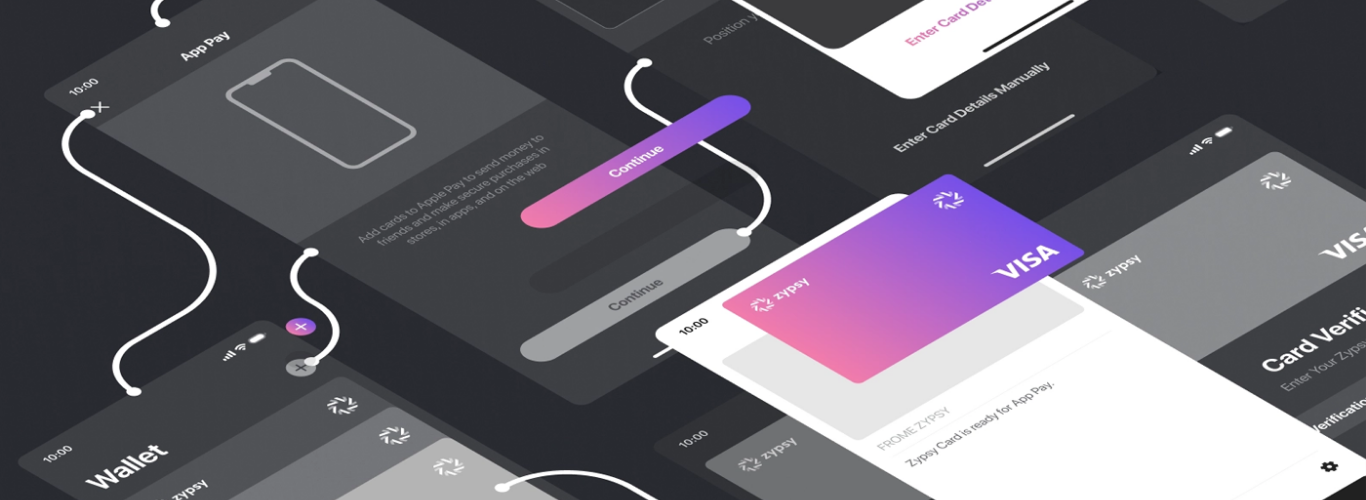Digital products are not built on whims (or at least they shouldn’t be). They are sculpted by meticulous planning, constant refinement, and, most critically: prototyping. In the tableau of digital product design and innovation, prototyping is not merely a phase but the pivotal step where potential ideas are auditioned, rehearsed, critiqued, and refined until they’re ready for the market.
In its essence, prototyping is the art of simulating the final product, creating mock-ups or models of a proposed product feature or a new design to test and validate various aspects before full-scale production. This process, often mistaken as an expendable luxury, is a cornerstone in constructing digital solutions that resonate on both functional and aesthetic levels. It is where abstract concepts meet real-world scrutiny, letting assumptions yield to pragmatic and solid user feedback.
The Importance of Prototyping in Digital Transformation
For businesses navigating the complex currents of digital transformation, particularly in dynamic and emerging markets in the MENA region such as Saudi Arabia and the United Arab Emirates, dismissing prototyping is like charting unknown waters without a compass. Prototyping is what illuminates unforeseen challenges, highlights opportunities for improvisation, and ultimately safeguards resources. It allows ideas the space to breathe and evolve, while ensuring they remain tethered to the realm of feasibility, all before ever-valuable funds and time are sunk into creation.
Prototyping is where ideas are deconstructed and reassembled, revealing the spectrum of potential consequences and benefits that might otherwise be hidden in traditional, linear development approaches. The cyclical nature of prototyping invites a continuous dialogue between designers and business stakeholders, fostering a culture of refinement and products that are usable, functional, elegant, and quintessentially user-centric.
Prototyping and Its Impact on UX Design & User-Centric Innovation
Prototyping is a conversation between designer and user, its every iteration poses a question to the audience, and every round of feedback constitutes a reply. It is this conversation that makes the final product not a monologue of the creator’s vision, but a rich dialogue imbued with the thoughts, needs, and desires of its users; a truly user-centric experience.
In digital product and user experience design, ideas move from abstract into tangible, and prototyping is the way to bring that about. Design & prototyping move in lockstep: each step of one cues in the next in the other, weaving the user’s voice into the fundamental design of the product.
With each prototype a solution is visualized, with an eye on user interaction. This lays bare the bones of the user’s interactions with the interface, allowing designers to address and enhance the experience, testing and perfecting each interaction, each response, in a way that is not just functional, but truly engaging. The process is inherently iterative.
To champion prototyping is to embrace a philosophy of innovation that places the user at its center. It compels designers to step outside the confines of their perceptions or assumptions and immerse themselves in the perspectives, thoughts, and feelings of their audience. This is not a passive exercise, but an active inquiry: How might a user navigate this interface? What emotions might this color palette evoke? How might this button’s placement enhance—or hinder—intuitiveness?
By fostering these moments of empathy, prototyping ensures that innovation is not designer-centric, but user-centric, that it not only functions, but deeply resonates and engages.
Understanding the Regional Market: Why Prototyping Matters
The digital terrain of emerging technological markets in MENA, such as Saudi Arabia, is ever-shifting. Beneath the kingdom’s economic robustness lies a tapestry of diverse consumers, a youthful demographic that is tech-savvy, discerning, and hungry for innovation. This blend of rapid modernization, ambitious economic visions, and a deep-rooted cultural ethos lends prototyping a role of even greater consequence.
The consumer base is not just expansive; it’s becoming more eclectic and sophisticated, demanding a digital experience that resonates and engages them. The conventional, one-size-fits-all approach to digital design and product development is simply no longer effective. Prototyping, therefore, is the very foundation upon which success in digital experiences depends. It allows for a nuanced understanding of local preferences, behaviors, and expectations — an essential compass in a market where the consumer is the true north.
Cultural and market relevance in Saudi Arabia is the foundation upon which digital solutions that reflect the kingdom’s unique identity, values, and aspirations will be built. Exposing potential clients to product prototypes facilitates this. This dialogue, this back-and-forth enables designers to weave cultural relevance into the very DNA of their products. It is not about surface-level customization but about architecting experiences that feel homegrown, authentic, and respectful of the rich heritage they serve; it’s a testament to how iterating, testing, and refining digital solutions to mirror the pulse of the local market is the winning strategy. It ensures that what finally comes out in the market is gold-standard, both in quality and relevance.
In places like Saudi, prototyping is the prologue to a narrative of digital success. It acknowledges the market’s complexity, respects its uniqueness, and crafts pathways not just to consumers’ devices, but to their hearts and minds.
Prototyping Techniques for Enterprise-Level Solutions
Prototyping offers varied techniques, each offering distinct glimpses into the potential of an idea. Enterprises must partner with user experience designers that have mastered the art of selecting the one that aligns seamlessly with their vision and business needs.
- Paper prototyping is a humble yet powerful form that transforms rudimentary sketches into interactive user interfaces, inviting invaluable feedback in the nascent stages of design.
- Clickable prototypes offer a more refined, interactive, digital experience that attempts to closely mimic the final product, providing stakeholders with a tangible, navigable model of what’s to come. The operative word here is “clickable” because that is the core feature and function, but they can be created on a spectrum of low to high fidelity.
- Low-fidelity prototypes are the bare bones of the design without the visual layer. They are usually wireframes of the layout and give an idea of the flow through the app, but without the colors, textures, images, and typography that will give the product its look and feel.
- High-fidelity prototypes are intricate and detailed, almost indistinguishable from the final product. They immerse stakeholders in the experience of the product allowing them to make crucial design decisions before sinking funds into actually developing the app.
These techniques come with their own set of promises and compromises. Paper prototyping is cost-effective and highly accessible but may fail to capture the essence of digital interaction that a product intends to offer. Clickable prototypes, while interactive and user-friendly, are usually clunky and not very smooth. This can sometimes give stakeholders the illusion that the product will function and operate in this clunky manner, negatively painting their view of the experience. High-fidelity prototyping, despite its allure and similarity to the final product, demands significant resources and can be a gamble if user requirements remain not fully understood, as it will require some effort to create ultimately negating the whole point of prototyping.
The key lies not in the power of the technique but in its relevant application, understanding that the same chisel that works for the marble slab may not suit the wooden table.
Selecting the Right Prototyping Technique for Your Business Needs
The choice of a prototyping technique is a strategic decision. It involves a deep understanding of the complexity of the project, the clarity of user requirements, the resources at disposal, the nature of the feedback that the phase intends to solicit, and the mentality of the client or stakeholder.
Businesses should recognize that prototyping is not a one-size-fits-all. It’s an art that demands as much creativity as the products it seeks to shape. It is also not a luxury that designers undertake to please their creative flair or flex their muscles; it is literally saving you thousands by showing you the product and immersing you in the experience before you sink money and time in its development… only to find out that you or your users don’t like it.
And the best part is: it’s not a solitary journey. Prototyping thrives on collaboration, co-creation, and most importantly, feedback—preferably from both users and stakeholders. By integrating feedback loops at various stages of the prototyping process, your business invites a spectrum of perspectives to shape the product or service. This continuous refinement chisels away at assumptions, polishes insights, and smooths out the rough edges—to reveal a masterpiece that is solid in form and engaging in function.
It’s literally a win-win.
Enhancing Product & Service Design through Prototyping
Prototyping is integral to elicit user feedback not only in the creation of mobile apps and digital products, but also in service design, as well as the design of physical products. It allows the balancing of functionality, aesthetics, and user satisfaction, resulting in experiences that are not just seamless but also profoundly engaging.
The problem with the current mobile app design landscape is that it’s teeming with options for stakeholders, which will clamor for the user’s finite attention. This is where prototyping shines as the road to success. It allows designers to quickly choose from a panoply of options, construct the mockup, deconstruct the feedback, and reconstruct the user experience until it zeroes in on the intuitive and discerning nature of people’s interactions with their devices.
By simulating real-world application usage scenarios, prototyping helps carve out user journeys that are efficient and delightfully memorable, adding only the needed amount of complexity that makes the app functional, but not so much as to make it difficult or unintuitive.
The realm of service design, especially in the context of Saudi Arabia’s digitally evolving landscape, has huge potential for user touchpoints and back-end process design. Prototyping in this arena produces what is called the “Minimum Viable Service”, which is an artifact that can reveal how a service feels, operates, and integrates with customers’ behaviors and interactions. It is through these iterative simulations that service blueprints are refined.
The feedback loops integral to prototyping ensure that service design is robust and resonates with the cultural, social, and personal narratives of its audience, resulting in customer engagement, retention, and eventually their loyalty and advocacy.
In essence, prototyping is the heart that pumps vitality into the veins of mobile applications and service design. It’s a relentless quest for excellence, where every iteration is a step closer to a physical or digital experience that transcends the ordinary. In this space, prototyping becomes the methodology and philosophy that guides what we will ultimately build, resulting in a product that exudes utility and elegance, and an experience that imprints itself on the user’s consciousness.
Case Study: The Power of Prototyping
When looking at how prototypes can bring about real innovation, Saudi Arabia is a perfect example and showroom for just that. These real-world examples show the rich tapestry of prototyping’s impact on digital products in Saudi Arabia, offering a glimpse into a future where ideas transcend the abstract and dance in the realm of the tangible.
One such case is the tale of Dr. Georg Eitelhuber, a prominent researcher in physics and renewable energy at King Abdullah University for Science and Technology (KAUST) in Saudi Arabia. He wanted to solve a problem with cleaning solar panels placed in the desert, a process which is essential for them to function properly, but involves hundreds of man-hours and tons of water—a scarce resource in the desert. He set out to create an automatic system for cleaning the panels.
What did he start with? A lego and toilet roll prototype. And from that humble beginning he is now CEO of NOMADD Desert Solar Solutions, a company that is making the dream of efficient solar energy in Saudi Arabia a reality.
Georg Eitelhuber’s journey from low-fidelity prototypes to fully functional, product-based company is a testament to the boundless realms one could traverse with a prototype as the compass.
Conclusion: The Road to Engaging Experiences and Successful Innovation Passes Through Prototyping
Prototyping can be dubbed the very lifeblood of innovation. It is an iterative process that explores potential, rehearsing the user’s experience before that critical go-to-market. In an age where the digital landscape is blossoming, prototyping remains the master gardener—nurturing ideas, pruning challenges, and foreseeing the fruition of digital experiences that resonate deeply with their end-users.
For innovation leaders, marketing managers, or technology directors standing at the crossroads of innovation, this should be a clear call to action: Prototyping is not an expendable step on the staircase to success for your products and services; it is the very foundation upon which sustainable solutions are built. It is an investment in foresight, a commitment to excellence, and a pledge to user-centricity.
Prototyping can be the compass that leads enterprises through the uncharted territories of innovation.
Embrace prototyping. Invest in its process. Reap the benefits of the clarity it bestows. For in this commitment lies the ability to transform the mundane into the extraordinary. Herein lies your path to crafting digital symphonies that linger, echo, and inspire awe long after their first encounter. The stage is set, the audience awaits; let prototyping raise the curtains on your masterpiece.








